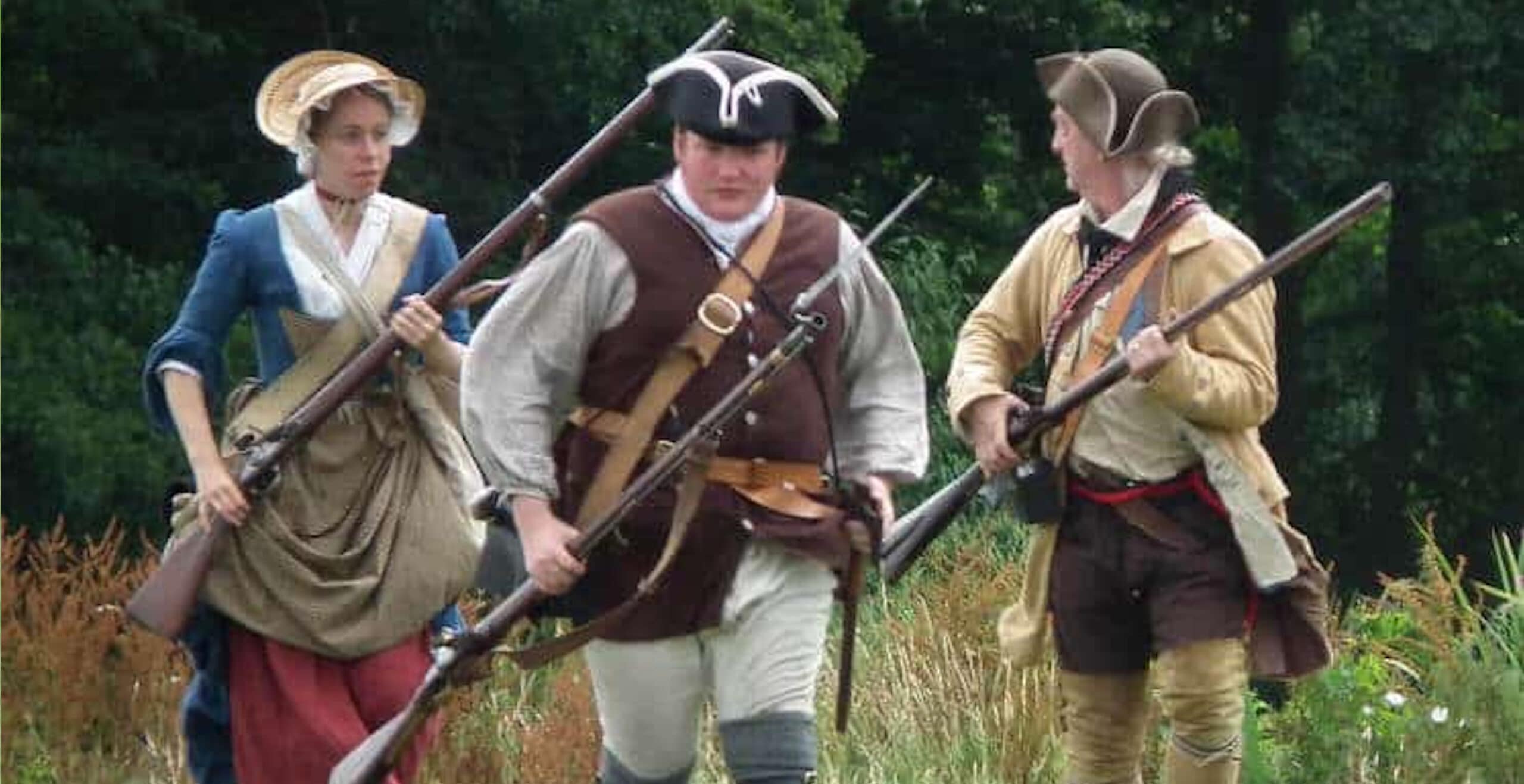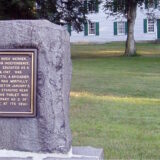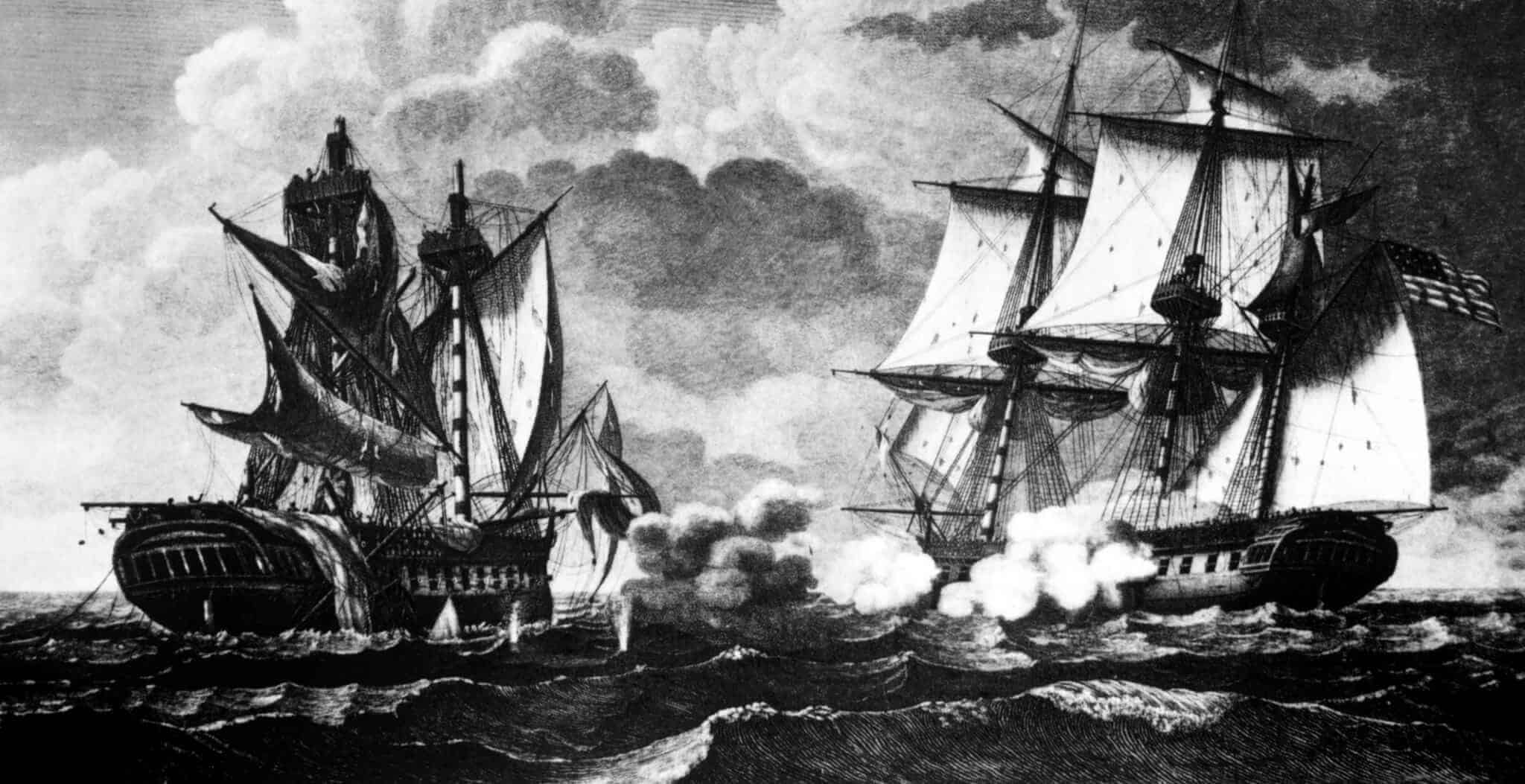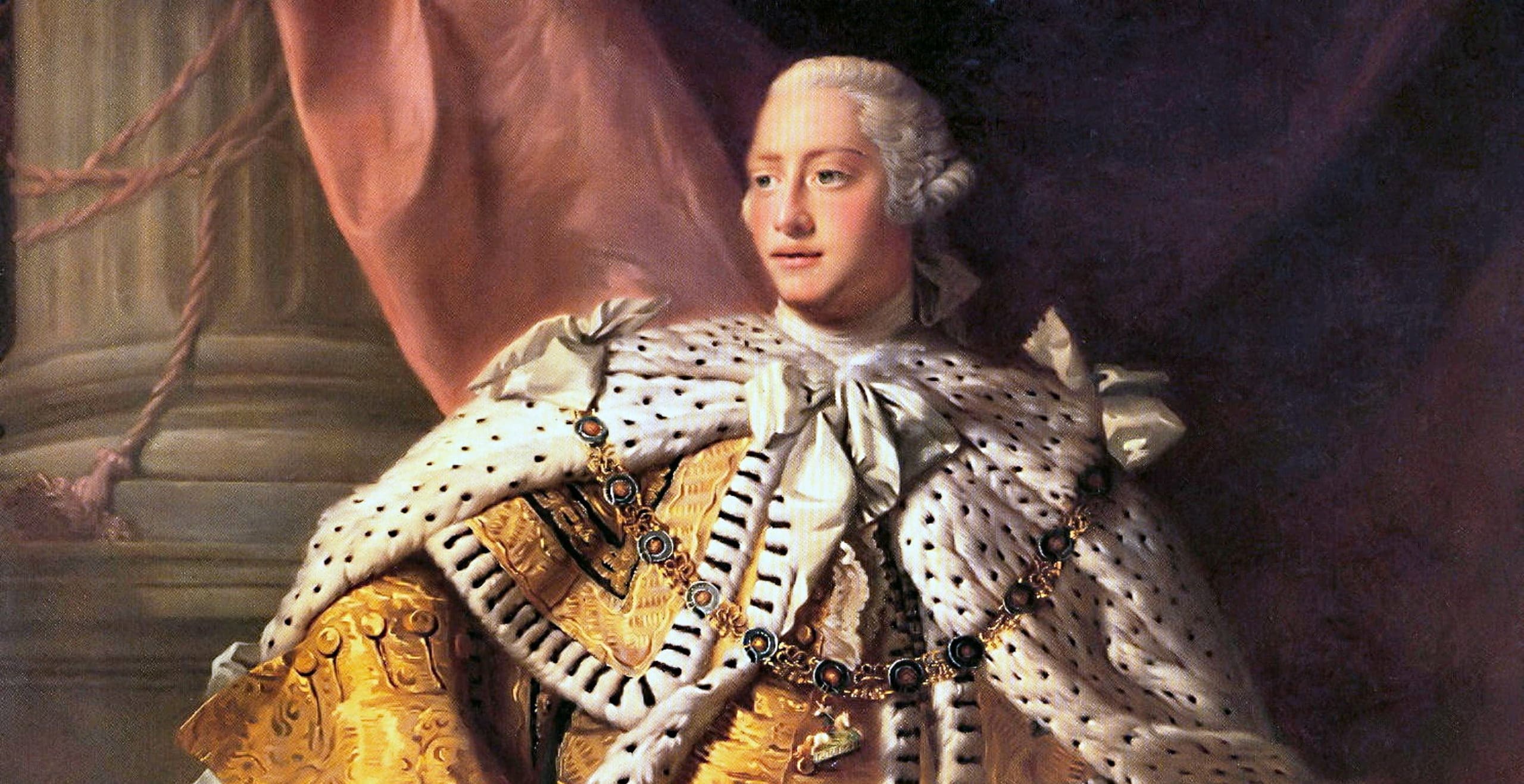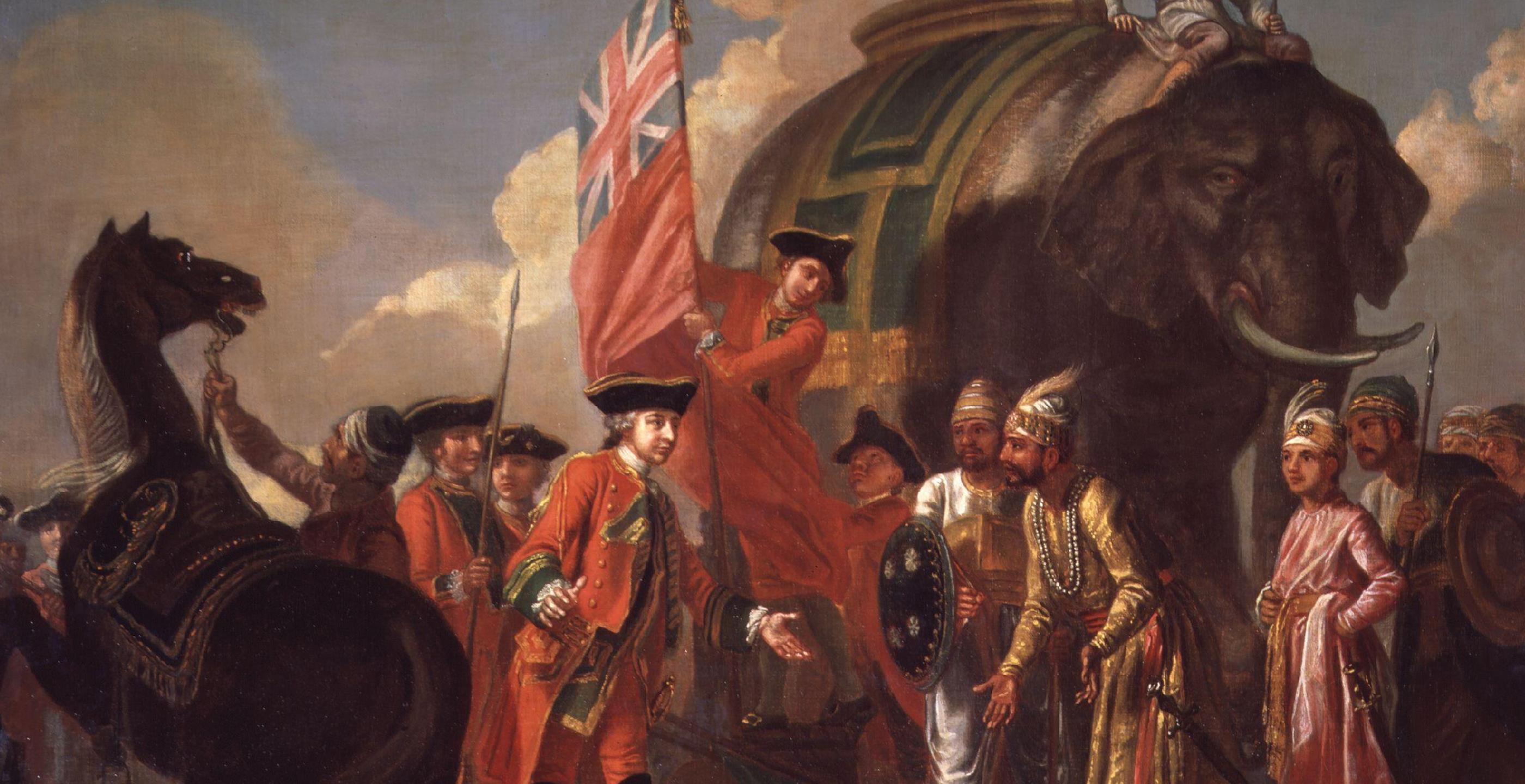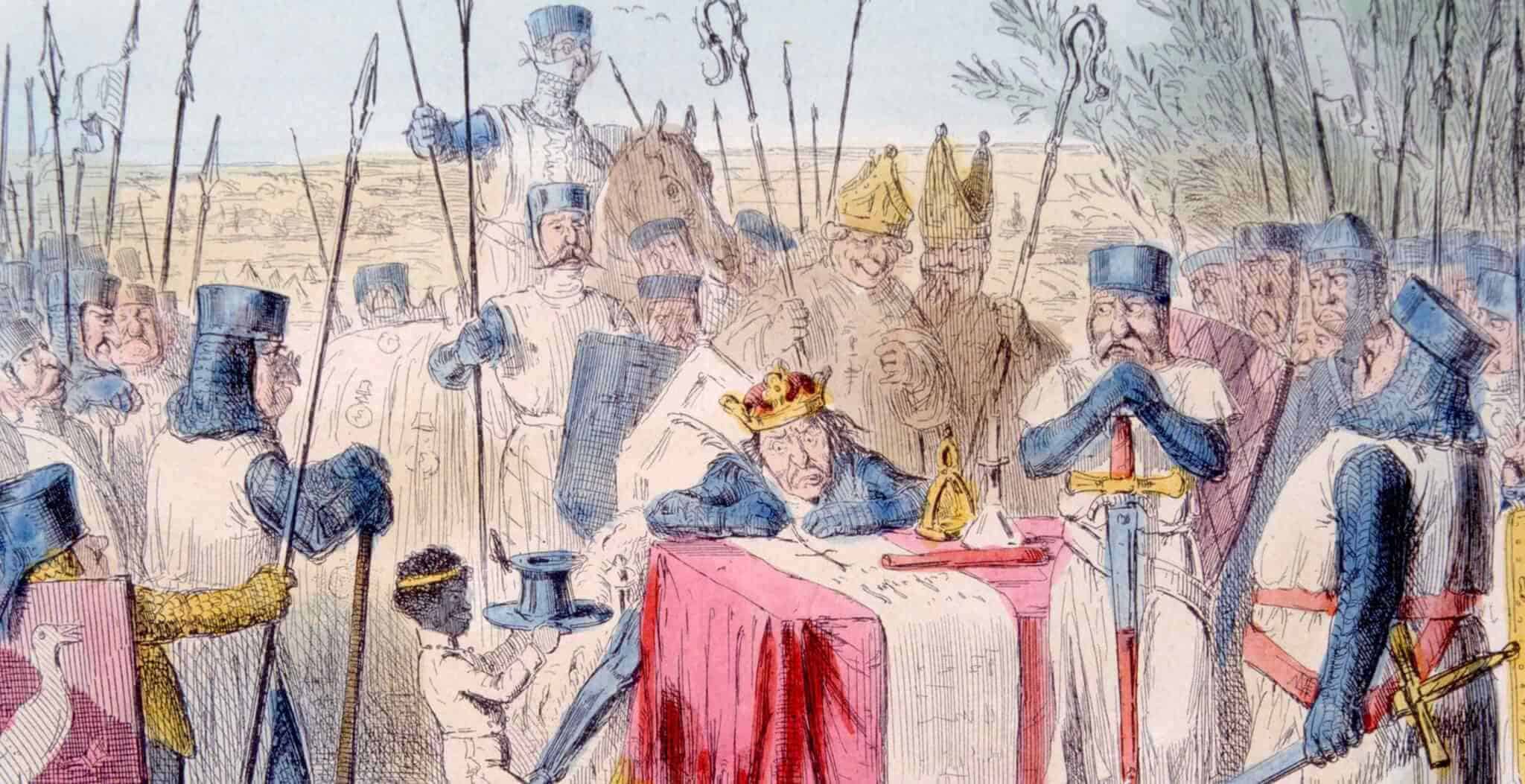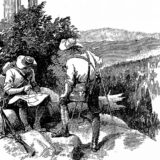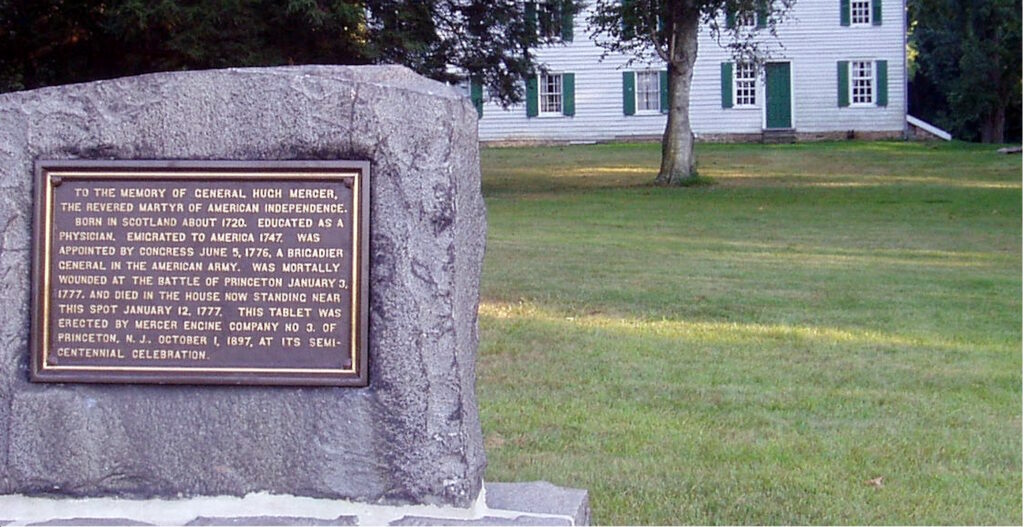The American fight for independence was a long and arduous one, rooted in discontent which had been brewing for years.
28th May 1754 – 7th October 1763 – The French and Indian War was a conflict which saw the larger colonial rivalry between Britain and France play out on a global stage. During this time, various Native American tribes were involved, siding with either Britain or France. With 2 million settlers in the British colonies compared to 60,000 French settlers, the French particularly needed native allies to bolster their numbers.
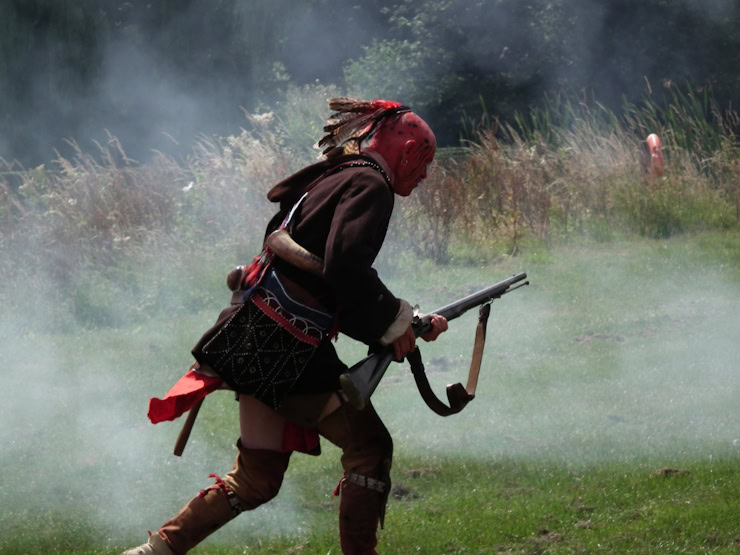
10th July 1754 – The Albany Plan of Union saw Benjamin Franklin propose a single centralised government for the colonies. Whilst largely favoured by the Patriots as it established more independence, the Loyalists viewed it as overly generous to the colonies and not compatible with their allegiance to the Crown.
1756-1763 – The Seven Years’ War began when France and Great Britain’s dispute in North America escalated into a global geopolitical battle fought in many locations including Europe, Africa, and Asia.
10th February 1763 – The Treaty of Paris formally ended the conflict between France and Great Britain over control of North America, with a settlement which greatly favoured Britain and thus cemented British dominance outside Europe. An unforeseen side effect of this victory was huge national debts for England, forcing Parliament to impose new taxes.
7th October 1763 – Royal Proclamation by King George III which instigated the Proclamation Line prohibiting Anglo-American colonists from settling on lands beyond the Appalachian Mountains acquired by the French (also known as Indian Reserve) following the French and Indian War.
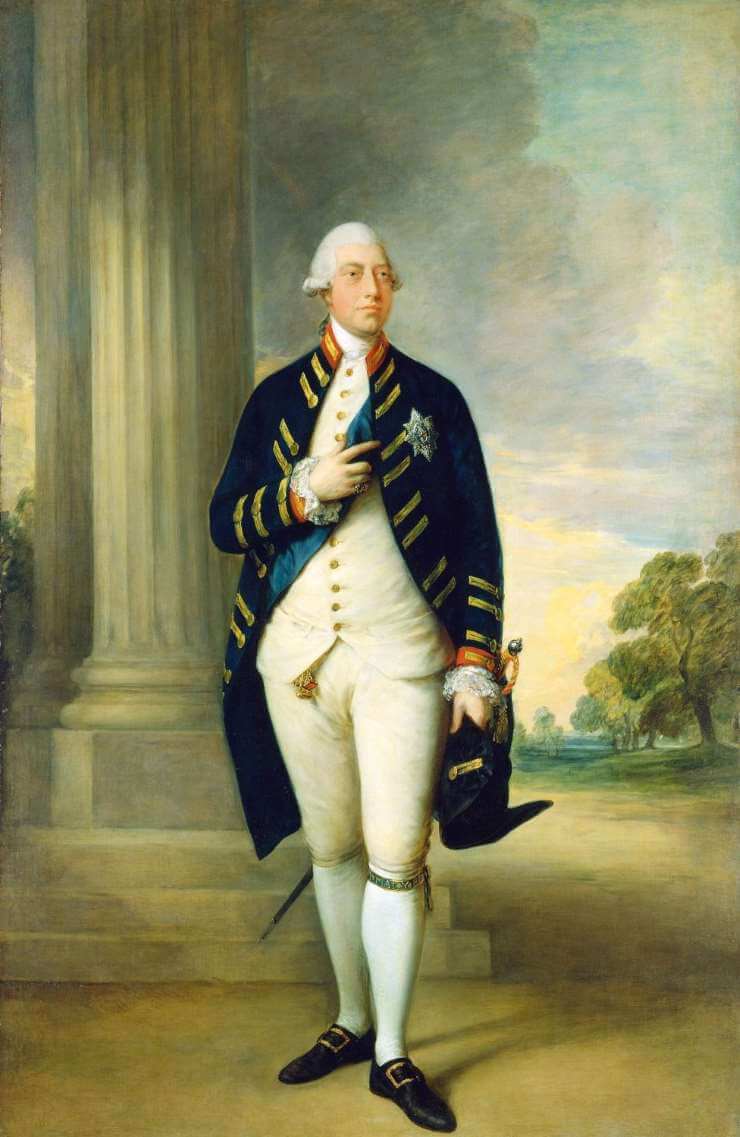
5th April 1764 – The Sugar Act cut the duty on foreign molasses from 6 to 3 pence per gallon, retained a high duty on foreign refined sugar, and prohibited the importation of all foreign rum. This angered the colonists for various reasons, as it violated basic principles of freedom they were supposed to enjoy, cost money and introduced complex procedures, ultimately contributing to simmering tensions.
22nd March 1765 – The Stamp Act imposed a tax on all paper goods and legal documents circulating in the colonies, in a bid to raise funds to pay for the burgeoning costs of war. This angered many colonists who refused to pay and protested against the imposition.
24th March 1765 – The Quartering Act was a British parliamentary provision which required colonial authorities to provide food, drink, quarters, fuel, and transportation to British forces stationed in their towns or villages. This angered colonists further, who felt it was an unjust form of taxation, as it required colonial legislatures to pay to house the troop.
7th October-25th October 1765 – The Stamp Act Congress was a meeting of delegates from nine American colonies who met to discuss the crisis regarding British taxation. Their response was ‘no taxation without representation’ and responded with the Declaration of Rights and Grievances.
18th March 1766 – The Declaratory Act was passed to emphasise British authority to pass laws that were binding for American colonies. It was accompanied by the repeal of the unpopular Stamp Act and the amendment of the equally disliked Sugar Act.
1766-1767- The Townshend Act introduced new duties on imports of glass, lead, paper and tea to the colonies from Great Britain. The revenue was then used to pay for the colonial governors and judges.
11th February 1768 – The Massachusetts Circular Letter was issued in reaction to the Townshend Act, denouncing the new measure and asserting that Britain had no right to tax the Thirteen Colonies without representation.
1st August 1768 – The Boston Non-Importation Agreement formalises the decisions by Boston merchants not to import or export items to Britain.
19th January 1770 – The Battle of Golden Hill involved British soldiers fighting the Sons of Liberty in the American colonies in New York City.
5th March 1770 – The Boston Massacre resulted in seven British soldiers firing into a crowd of agitated Bostonians, killing five, wounding another six.
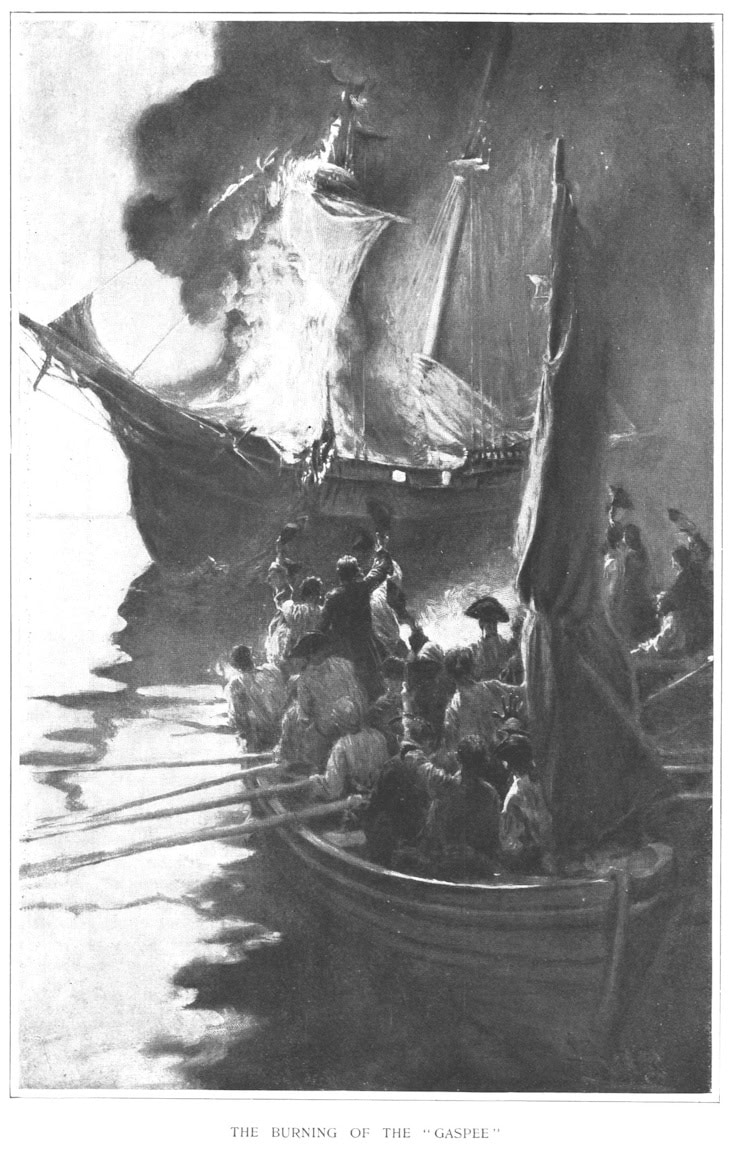
9th June 1772 – The Gaspée Affair involved the HMS Gaspee which enforced the Navigation Acts around Newport, Rhode Island. After running aground whilst pursuing a packet boat Hannah, a group of men led by Abraham Whipple and John Brown I attacked, boarded, and burned the Gaspee. This mob violence was viewed as treason by the British.
10th May 1773 – The Tea Act reduced the tax on imported British tea, thus giving British merchants an advantage in selling their tea in America. American colonists condemned the act, and many planned to boycott tea.
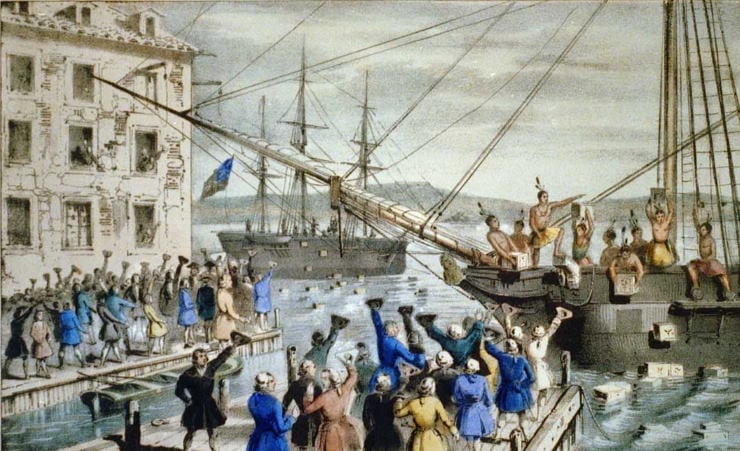
16th December 1773 – The Boston Tea Party was a protest of both political and mercantile nature by the Sons of Liberty, who threw 342 chests of tea into Boston Harbour in protest against the Tea Act.
31st March 1774 – The Boston Port Act responded by closing the Port down to all commerce and imposing a large fine to compensate for the tea thrown in the river.#
5th September-26th October 1774 The First Continental Congress saw delegates from 12 out of the 13 Colonies formally declare that colonists should have the same rights as Englishmen and agreed to form the Continental Association, which called for the suspension of trade with Great Britain.
23rd March 1775 – The “Liberty or Death” speech is given by Patrick Henry at the Virginia Convention.
19th April 1775 – 3rd September 1783 – The American Revolution
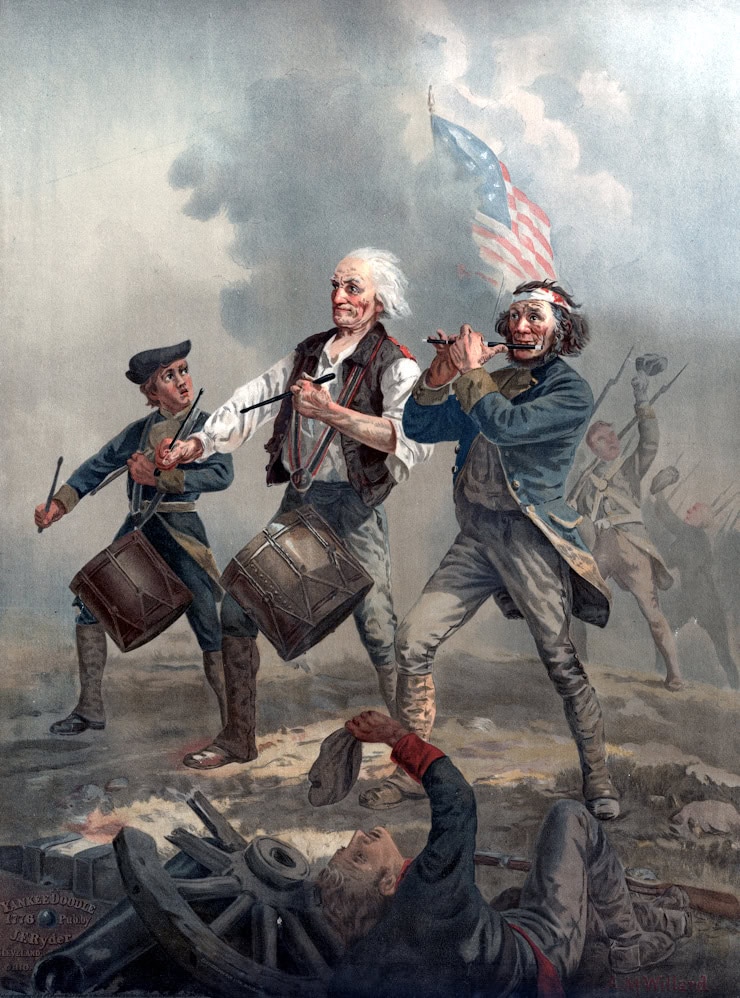
19th April 1775 – The Battles of Lexington and Concord in Massachusetts where the famous shot heard ’round the world’ marked the start of the American War of Independence.
10th May 1775 – The Second Continental Congress met and established a Continental army as well as electing George Washington as Commander-in-Chief. They also drafted the Olive Branch Petition and sent it to King George III in hopes of reaching a peaceful resolution.
17th June 1775 – The Battle of Bunker Hill was the first major battle of the American Revolution and was fought in Charlestown during the Siege of Boston. It resulted in a British victory however it rallied many to the revolutionary cause.
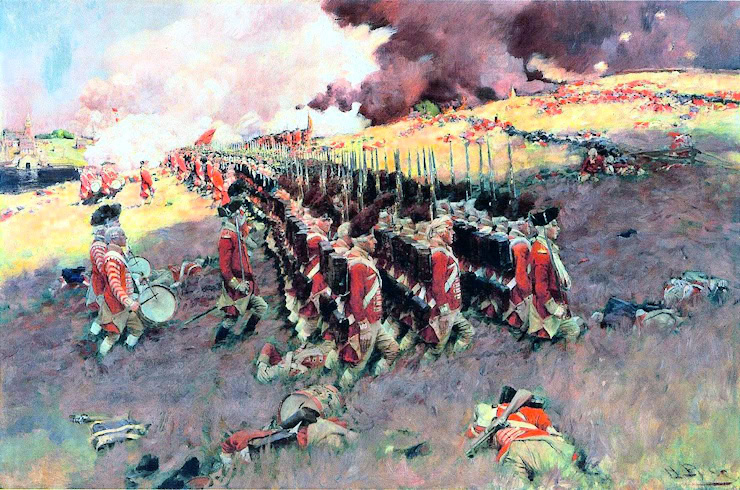
13th October 1775 – The US Navy is established.
19th-21st November 1775 – The First Battle of Ninety Six/ The siege of Savage’s Old Fields was an encounter between Patriot and Loyalist forces in South Carolina.
13th November 1775 – The Invasion of Quebec by American forces (the Continental Army).
9th December 1775 – The Battle of Great Bridge was the first Patriot victory which forced Lord Dunmore who was British Royal Governor of Virginia and his soldiers to evacuate and ultimately leave Virginia.
23rd December-30th December 1775 – The Snow Campaign involved an army of around 3,000 Patriot militia under Colonel Richard Richardson marching against Loyalist recruiting centres in South Carolina. The episode was remembered for its heavy snowfall in the latter part of the campaign.
31st December 1775 – The Battle of Quebec resulted in a heavy defeat for the American Patriots, the first defeat of the American Revolutionary War.
10th January 1776 – “Common Sense” by Thomas Paine was published advocating independence from Great Britain for the people in the Thirteen Colonies.
17th March 1776 – Evacuation of Boston by the British.
12th April 1776 – Halifax Resolves was a resolution which resulted in the first official colony to authorise its delegates to vote for independence.
7th June 1776 – The Lee Resolution was the earliest version of the Declaration of Independence, a resolution of independence from the British Empire proposed by Richard Henry Lee of Virginia.
28th June 1776 – The Battle of Sullivan’s Island was a decisive and strategic Patriot victory against the British Navy.
4th July 1776 – The Declaration of Independence adopted by the Continental Congress, calling for freedom and equality, severing the domination of the British over the Thirteen Colonies.
27th August 1776 – The Battle of Brooklyn resulted in a British victory, many losses and casualties as well as significantly the British occupation of Brooklyn and Manhattan for seven years.
11th October 1776 – The Battle of Valcour Island resulted in a British victory but was significant as one of the first naval battles between the Royal Navy and the US Navy.
23rd December 1776 – “The American Crisis” by Thomas Paine was published after a series of Patriot defeats in order to boost the morale of the American cause for independence.
26th December 1776 – The Battle of Trenton was a small but morale boosting victory for American forces.
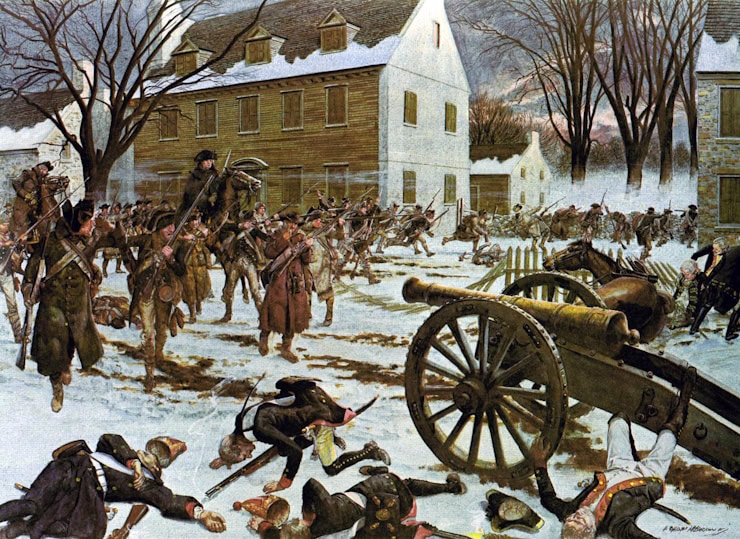
14th June 1777 – The Flag Resolution was passed by the Continental Congress stating “that flag of the thirteen United States be thirteen stripes, alternate red and white; that the union be thirteen stars, white in a blue field”.
14th June 1777 – 17th Oct 1777 – The Saratoga Campaign was an attempt by British forces to gain control of the strategically valuable Hudson River, however it ended in the surrender of the British army and marked an important turning point for the Americans.
1777-1778 -The Philadelphia Campaign was a British military campaign designed to gain control of Philadelphia, the Revolutionary-era capital where the Second Continental Congress convened.
6th February 1778 – The Treaty of Alliance was signed between the United States and France, marking a significant juncture and foreign involvement in the war.
18th June 1778 – Philadelphia is abandoned by the British after the French declared war on Great Britain and the British were forced to adopt a new strategy to face this threat.
29th July-31st August 1778 – Siege of Newport by combined French and American forces.
29th December 1778 – The “Southern Strategy” is adopted by the British, sending expeditions from New York and East Florida to capture Savannah, Georgia.
14th February 1779 – The Battle of Kettle Creek secures a major victory for the Patriots in Georgia.
12th April 1779 – The Treaty of Aranjuez cemented an alliance between France and Spain, with the latter providing military support for the French during their involvement in the American War of Independence. In return, Spain secured French assistance in repossessing Gibraltar, Minorca as well as East and West Florida.
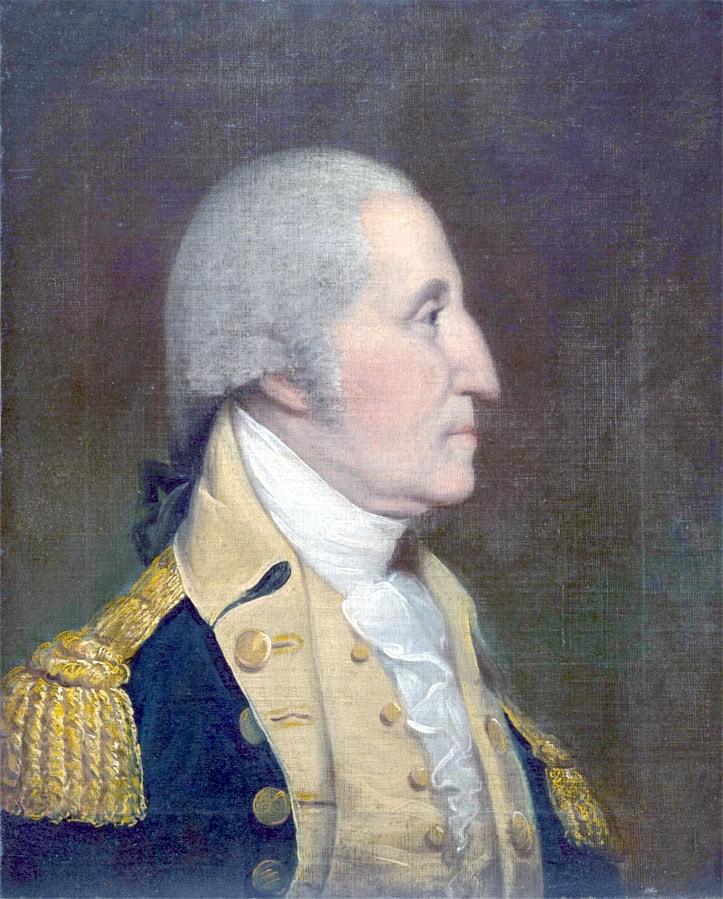
18th June-3rd October 1779 – The Sullivan Expedition was a US campaign against four British-allied nations of the Iroquois, ordered by George Washington. The result was a scorched-earth policy against the territory of the Iroquois Confederacy (modern-day new York) leading to 40 Iroquois villages being burned to the ground, crops destroyed and the area depopulated as they went to Fort Niagara to seek British protection.
21st June 1779 – Declaration of War made official by Spain against the British.
24th July 1779 – 14th August 1779 – The Penobscot Expedition was the largest American naval expedition of the war and resulted in a devastating naval defeat for the Americans both in terms of lives lost, financial cost and material loss. The British were left in control of northern New England.
14th March 1780 – The capture of port Mobile, Alabama by Spanish forces.
12th May 1780 – The capture of Charleston by British forces.
25th May 1780 – The Mutiny of Connecticut regiments at Morristown.
26th May 1780 – The Battle of St Louis was fought between British-allied Indians and defenders of the Franco-Spanish village of St. Louis, Louisiana. The British failure to defend their side of the river curtailed further attempts to gain control of the Mississippi River.
29th May 1780 – The Battle of Waxhaws. Whilst consolidating British control of South Carolina, this was a decisive turning point for war in the south as it led to a surge in support for the Patriot cause.
20th June 1780 – The Battle of Ramsour’s Mill saw the Patriots launch a successful surprise attack on 1300 Loyalist troops, thus debilitating British support in the region.
16th August 1780- The Battle of Camden involved more than 2,000 British and Loyalist troops under Lt. General Lord Cornwallis, defeating over 4,000 American troops commanded by the “Hero of Saratoga,” General Horatio Gates making it the worst Patriot defeat of the American Revolution.
2nd October 1780 – British officer John André was hanged by the Continental Army as a spy in Tappan.
7th October 1780 – The Battle of Kings Mountain was a pivotal Patriot victory against the Loyalists and boosted their morale after incurring a series of defeats.
17th January 1781 – The Battle of Cowpens took place near Chesnee, South Carolina and proved to be a critical American win, inflicting a defeat against British attempts to take control of the southern colonies.
1st March 1781 – The Articles of Confederation was enforced after being ratified by all 13 colonial states. The main principle of the Articles focused on independence and sovereignty.
15th March 1781 – The Battle of Guilford Courthouse was a pyrrhic victory for the British who paid a high price and was a turning point in the Southern Campaign.
22nd May -18th June 1781 – The Siege of Ninety Six saw Patriot General Nathanael Greene besiege the vital South Carolina post. By June the attempts at an all-out assault failed and ended in a British victory.
6th June 1781 – Americans retake Augusta.
5th September 1781 – The Battle of the Chesapeake (Battle of the Capes) was a vital naval battle involving a British fleet led by Rear Admiral Sir Thomas Graves and a French fleet led by Rear Admiral François Joseph Paul, the Comte de Grasse. The battle prevented the Royal Navy from reinforcing or evacuating the besieged forces of Lieutenant General Lord Cornwallis at Yorktown, Virginia.
8th September 1781- The Battle of Eutaw Springs was the last major battle in South Carolina.
28th September-19th October 1781- The Siege of Yorktown (Battle of Yorktown) was the last significant land battle in the war and proved to be a decisive victory for the Americans who were led by General George Washington and supported by their French counterparts. The outcome led to the capture of Cornwallis and his men and the general’s ultimate surrender. The British defeat would subsequently prompt the British government to begin negotiations to end the conflict.
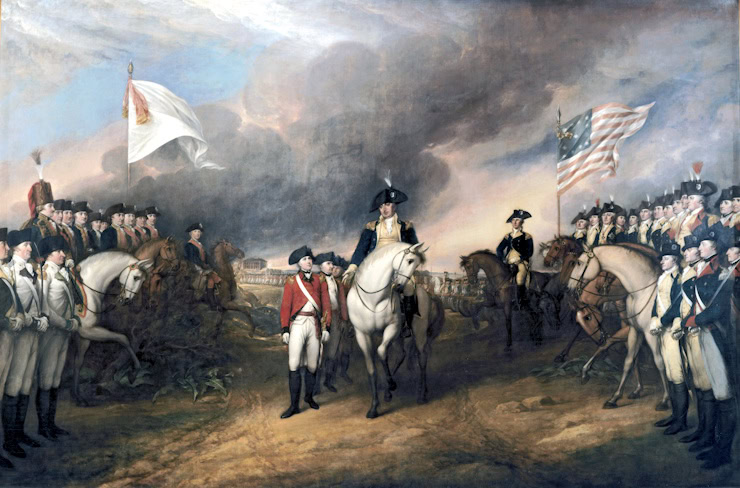
20th March 1782 – The Prime Minister of Great Britain, Lord North resigns.
19th April 1782 – American Independence is recognised by the Netherlands.
8th May 1782 – Nassau, Bahamas is captured by joint American and Spanish forces.
11th July 1782 – Evacuation of the British from Savannah.
7th August 1782 – The Badge of Military Merit (known as the Purple Heart) was established and awarded to non-commissioned officers and soldiers of the Continental Army. It is largely considered America’s first military decoration, and the second oldest in the world (after the Cross of St. George).
19th August 1782 – The Battle of Blue Licks was one of the final battles involving a force of about 50 British rangers and 300 American Indians who ambushed and routed 182 Kentucky militiamen.
30th November 1782 – The Articles of Peace as a preliminary version was signed by the British and Americans.
14th December 1782 – The British evacuate Charleston.
19th April 1783- The Congress ratifies the preliminary peace treaty.
3rd September 1783 – The Treaty of Paris signed by Great Britain and America results in the formal ending of the American War of Independence.
Jessica Brain is a freelance writer specialising in history. Based in Kent and a lover of all things historical.
Published: 22nd January 2025.
